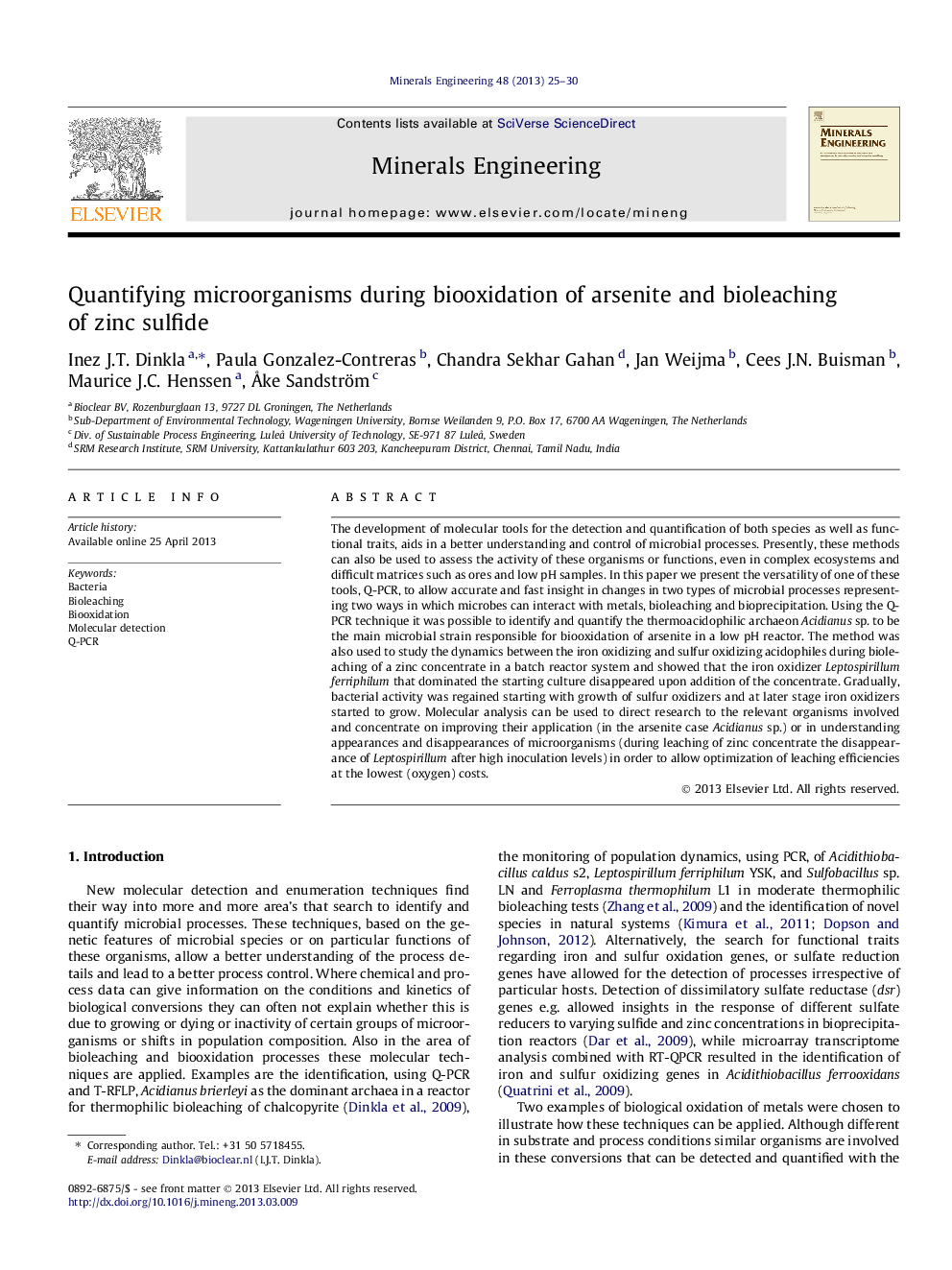| Article ID | Journal | Published Year | Pages | File Type |
|---|---|---|---|---|
| 233430 | Minerals Engineering | 2013 | 6 Pages |
•Molecular tools provide insight in dynamics of bioprecipitation and bioleaching.•Thermoacidiphilic archaea Acidianus: main organism oxidizing arsenite at low pH.•Insight in dynamics of iron- and sulfur oxidizing acidophiles during bioleaching.•Bioleaching of zinc influenced by redox sensitivity of Leptospirillum ferriphilum.
The development of molecular tools for the detection and quantification of both species as well as functional traits, aids in a better understanding and control of microbial processes. Presently, these methods can also be used to assess the activity of these organisms or functions, even in complex ecosystems and difficult matrices such as ores and low pH samples. In this paper we present the versatility of one of these tools, Q-PCR, to allow accurate and fast insight in changes in two types of microbial processes representing two ways in which microbes can interact with metals, bioleaching and bioprecipitation. Using the Q-PCR technique it was possible to identify and quantify the thermoacidophilic archaeon Acidianus sp. to be the main microbial strain responsible for biooxidation of arsenite in a low pH reactor. The method was also used to study the dynamics between the iron oxidizing and sulfur oxidizing acidophiles during bioleaching of a zinc concentrate in a batch reactor system and showed that the iron oxidizer Leptospirillum ferriphilum that dominated the starting culture disappeared upon addition of the concentrate. Gradually, bacterial activity was regained starting with growth of sulfur oxidizers and at later stage iron oxidizers started to grow. Molecular analysis can be used to direct research to the relevant organisms involved and concentrate on improving their application (in the arsenite case Acidianus sp.) or in understanding appearances and disappearances of microorganisms (during leaching of zinc concentrate the disappearance of Leptospirillum after high inoculation levels) in order to allow optimization of leaching efficiencies at the lowest (oxygen) costs.
